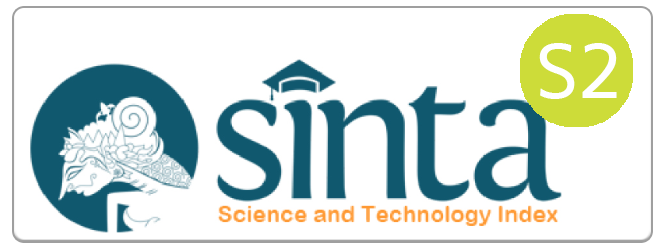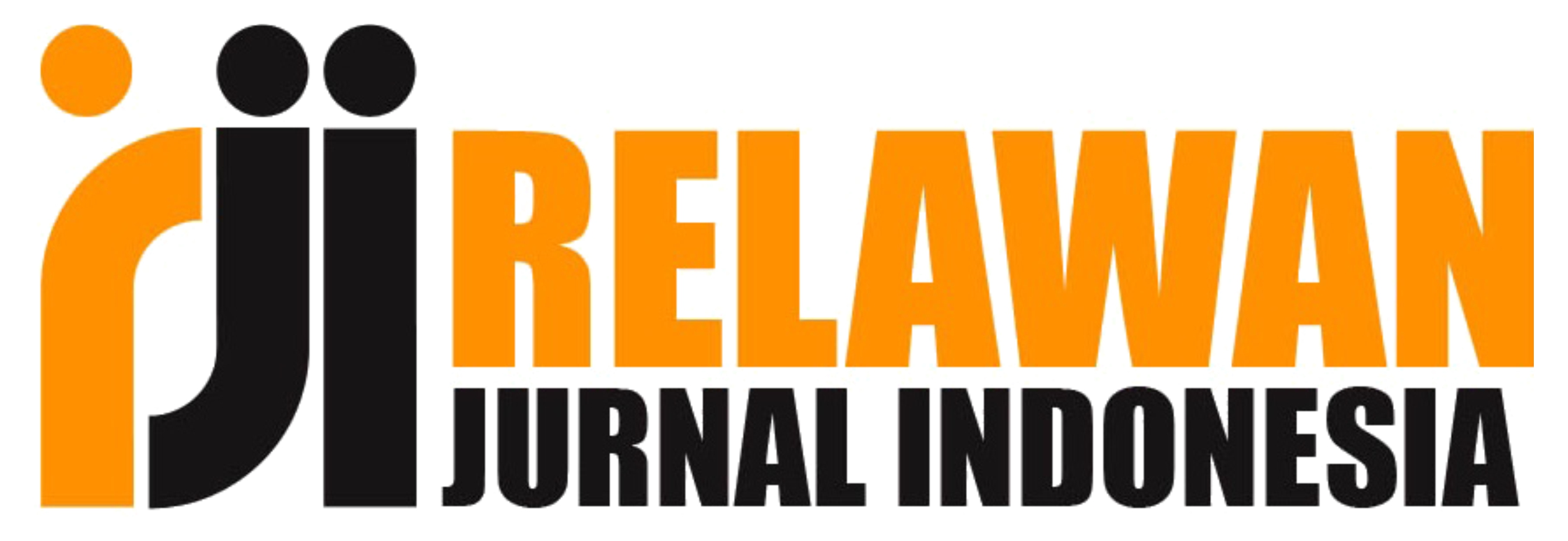Tailoring Service Delivery Innovation Architecture: A Service-Dominant Logic Theory Perspective for Micro Small and Medium Enterprises
Abstract
Keywords
Full Text:
PDFReferences
Aguinis, H., Gottfredson, R. K., & Joo, H. J. O. R. M. (2013). Best-practice recommendations for defining, identifying, and handling outliers. Organizational Research Methods 16(2), 270-301. doi:10.1177/1094428112470848
Aguirre-Urreta, M. I., & Hu, J. (2019). Detecting Common Method Bias: Performance of the Harman’s Single-Factor Test. The database for advances in information systems, 50(2), 45-70. doi:10.1145/3330472.3330477.
Ahmad, S. Z., Abu Bakar, A. R., & Ahmad, N. (2019). Social media adoption and its impact on firm performance: the case of the UAE. International Journal of Entrepreneurial Behavior & Research, 25(1), 84-111. doi.org/10.1108/IJEBR-08-2017-0299
Appel, G., Grewal, L., Hadi, R., & Stephen, (2020). The future of social media in marketing. Journal academy marketing science. 48(1), 79-95. doi: 10.1007/s11747-019-00695-1.
Arwanto, V., Buschle-Diller, G., Mukti, Y. P., Dewi, A. D. R., Mumpuni, C., Purwanto, M. G. M., & Sukweenadhi, J. J. H. (2022). The state of plant-based food development and its prospects in the Indonesia market. Heliyon. e11062. doi:10.1016/j.heliyon.2022.e11062
Baron, R. M., Kenny, D. A. J. J. o. p., & psychology, s. (1986). The moderator–mediator variable distinction in social psychological research: Conceptual, strategic, and statistical considerations. Journal of Personality and Social Psychology. 51(6), 1173. doi.org/10.1037//0022-3514.51.6.1173.
Bhatia, I., & Mabillard, V. J. E. G., an International Journal. (2022). How do cities use their communication channels? A study of social media adoption in two European federal states. Electronic Government an International Journal. 18(2), 119-136. doi:10.1504/EG.2022.10043051
Blunch, N. J. (2008). Introduction to Structural Equation Modelling Using SPSS and AMOS. SAGE Research Methods.
Brown, T. A. (2006). (Methodology In The Social Sciences) - Confirmatory Factor Analysis for Applied Research. The Guilford Press.
Cheung, M. L., Pires, G. D., Rosenberger III, P. J., Leung, W. K., & Ting, H. J. A. M. J. (2021). Investigating the role of social media marketing on value co-creation and engagement: An empirical study in China and Hong Kong. Australasian Marketing Journal (AMJ). 29(2), 118-131. doi:10.1016/j.ausmj.2020.03.006
Effendi, M. I., Sugandini, D., Istanto, Y. J. T. J. o. A. F., Economics, & Business. (2020). Social media adoption in SMEs impacted by COVID-19: The TOE model. Journal of Asian Finance Economics and Business 7(11), 915-925. doi:10.13106/jafeb.2020.
Erlangga, H. J. T. J. o. C., & Education, M. (2021). Effect of digital marketing and social media on purchase intention of Smes food products. Turkish Journal of Computer and Mathematics Education (TURCOMAT). 12(3), 3672-3678. doi.org/10.17762/turcomat.v12i3.1648
Fan, M., Qalati, S. A., Khan, M. A. S., Shah, S. M. M., Ramzan, M., & Khan, R. S. (2021). Effects of entrepreneurial orientation on social media adoption and SME performance: The moderating role of innovation capabilities. PLoS One, 16(4), e0247320. doi:10.1371/journal.pone.0247320.
Fernandez, A. I., Lara, P. R., Ugalde, M. C., & Sisodia, G. S. (2018). Distinctive competencies and competency-based management in regulated sectors: A methodological proposal applied to the pharmaceutical retail sector in Spain. Journal of Retailing and Consumer Services, 42, 29-36. doi:10.1016/j.jretconser.2018.01.007.
Franke, N., Keinz, P., & Steger, C. J. J. J. o. m. (2009). Testing the value of customization: when do customers really prefer products tailored to their preferences?. Journal of Marketing. 73(5), 103-121. doi:10.1509/jmkg.73.5.103
Hair, J. F., Black, W. C., Babin, B. J., & Anderson, R. E. (2013). Multivariate Data Analysis. pearson new international edition.
Hohne, J. K., Krebs, D., & Ku¨hnel, S.-M. (2022). Measuring Income (In)equality: Comparing Survey Questions With Unipolar and Bipolar Scales in a Probability-Based Online Panel. Social Science Computer Review, 40(1), 108 –123. doi:10.1177/0894439320902461
Khan, M. N., Ashraf, M. A., Seinen, D., Khan, K. U., & Laar, R. A. (2021). Social Media for Knowledge Acquisition and Dissemination: The Impact of the COVID-19 Pandemic on Collaborative Learning Driven Social Media Adoption. Front Psychol, 12, 648253. doi:10.3389/fpsyg.2021.648253.
Kircaburun, K., Alhabash, S., Tosuntaş, Ş. B., Griffiths, M. D. J. I. J. o. M. H., & Addiction. (2020). Uses and gratifications of problematic social media use among university students: A simultaneous examination of the Big Five of personality traits, social media platforms, and social media use motives. International Journal of Mental Health and Addiction. 18, 525-547. doi:10.1007/s11469-018-9940-6
Marko, K. J. L., & Direito, L. L. e. (2021). Exploring the distinctiveness of emoji use for digital authorship analysis. Language and Law / Linguagem e Direito. 7(1-2), 36-55. doi:10.21747/21833745/lanlaw/7_1_2a9.
Marolt, M., Zimmermann, H.-D., & Pucihar, A. (2022a). Social Media Use and Business Performance in SMEs: The Mediating Roles of Relational Social Commerce Capability and Competitive Advantage. Sustainability, 14(22). doi:10.3390/su142215029.
Mehmood, T. J. I. J. o. T., Innovation, & Management. (2021). Does information technology competencies and fleet management practices lead to effective service delivery? Empirical evidence from E-Commerce Industry. International Journal of Technology, Innovation and Management (IJTIM). 1(2), 14-41. doi.org/10.54489/ijtim.v1i2.26
Palacios-Marqués, D., García, M. G., Sánchez, M. M., & Mari, M. P. A. (2019). Social entrepreneurship and organizational performance: A study of the mediating role of distinctive competencies in marketing. Journal of Business Research, 101, 426-432. doi:10.1016/j.jbusres.2019.02.004.
Peltier, J. W., Dahl, A. J., & Swan, E. L. J. J. o. B. R. (2020). Digital information flows across a B2C/C2C continuum and technological innovations in service ecosystems: A service-dominant logic perspective. Journal of Business Research. 121, 724-734. doi: 10.1016/j.jbusres.2020.03.020.
Pentina, I., & Koh, A. C. (2012). Exploring social media marketing strategies in SMEs. International Journal of Internet Marketing and Advertising, 7(4), 292-310. doi: 10.1504/IJIMA.2012.051613
Podsakoff, P. M., MacKenzie, S. B., & Podsakoff, N. P. (2012). Sources of Method Bias in Social Science Research and Recommendations on How to Control It. The Annual Review of Psychology. 63(1), 539-569. doi:10.1146/annurev-psych-120710-100452.
Podsakoff, P. M., MacKenzie, S. B., Lee, J.-Y., & Podsakoff, N. P. (2003). Common Method Biases in Behavioral Research: A Critical Review of the Literature and Recommended Remedies. Journal of Applied Psychology, 88(5), 879-903. doi.org/10.1037/0021-9010.88.5.879
Qalati, S. A., Ostic, D., Shuibin, G., & Mingyue, F. (2021). A mediated–moderated model for social media adoption and small and medium‐sized enterprise performance in emerging countries. Managerial and Decision Economics, 43(3), 846-861. doi:10.1002/mde.3422.
Saha, V., Goyal, P., Jebarajakirthy, C. J. J. o. B., & Marketing, I. (2022). Value co-creation: a review of literature and future research agenda. Journal of Business and Industrial Marketing. 37(3), 612-628. doi: 10.1108/JBIM-01-2020-0017.
Schaarschmidt, M., & Walsh, G. J. J. o. B. R. (2020). Social media-driven antecedents and consequences of employees' awareness of their impact on corporate reputation. Journal of Business Research. 117, 718-726. doi: 10.1016/j.jbusres.2018.11.027.
Sharma, P. J. M. I., & Planning. (2022). Understanding destination evangelism: a social media viewpoint. Marketing Intelligence & Planning. 40(1), 72-88. doi: 10.1108/MIP-04-2021-0128
Tabachnick, B. G., & Fidell, L. S. (2014). Using Multivariate Statistics. Pearson Education Limited.
Terho, H., Mero, J., Siutla, L., & Jaakkola, E. J. I. M. M. (2022). Digital content marketing in business markets: Activities, consequences, and contingencies along the customer journey. Industrial Marketing Management. 105, 294-310. doi: 10.1016/j.indmarman.2022.06.006.
Trawnih, A., Yaseen, H., Al-Adwan, A. S., Alsoud, R., Jaber, O. A. J. J. o. M. I., & Sciences, D. (2021). Factors influencing social media adoption among smes during Covid-19 crisis. International Journal of Information and Decision Sciences. 24(6), 1-18.
Valkenburg, P. M. J. C. o. i. p. (2022). Social media use and well-being: What we know and what we need to know. Current Opinion in Psychology. 45, 101294. doi: 10.1016/j.copsyc.2021.12.006.
Vargo, S. L., & Lusch, R. F. (2014). Service-dominant logic: What it is, what it is not, what it might be. In The service-dominant logic of marketing. Routledge.
Vargo, S. L., & Lusch, R. F. J. I. j. o. r. i. m. (2017). Service-dominant logic 2025. International Journal of Research in Marketing. 34(1), 46-67. doi: 10.1016/j.ijresmar.2016.11.001.
Verma, R., & Jayasimha, K. R. (2014). Service delivery innovation architecture: An empirical study of antecedents and outcomes. IIMB Management Review, 26(2), 105-121. doi:10.1016/j.iimb.2014.03.002.
DOI: http://dx.doi.org/10.56444/mem.v39i1.4298
Article Metrics
Abstract view : 2250 timesPDF - 0 times
Refbacks
- There are currently no refbacks.
Copyright (c) 2024 Media Ekonomi dan Manajemen

This work is licensed under a Creative Commons Attribution 4.0 International License.

This work is licensed under a Creative Commons Attribution 4.0 International License.







